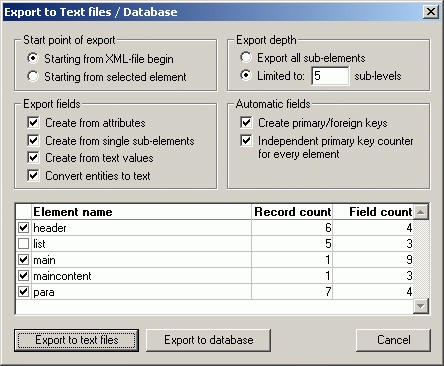
It may sometimes become necessary to export XML data into other formats for exchange with databases or legacy systems. Depending on the output data format required, you may either want to use XSLT Transformations or this Export command to export your XML data. You will first need to tell XML Spy how you would like your exported data to be structured. Since XML is structured hierarchically and most database and legacy systems are using the relational model, XML Spy will help you in producing output that can be interpreted in a relational context.
You can choose to export the entire XML document or restrict your export to the currently selected element (and its children). Depending on your XML data, you may want to export only elements, attributes, or the textual content of your elements into the fields common to structured text files or databases. The list of available element types lets you choose which elements you wish to export and also shows you how many records and fields this will actually produce once the export operation is started. XML Spy will then produce one output file or table for each element type selected and you can choose to automatically create primary/foreign key pairs to link your data in the relational model. When you are done defining the scope of your export operation, click on one of the two target buttons to export your data to a set of text files or into any database. |
⌐ 2000 Icon Information-Systems |
